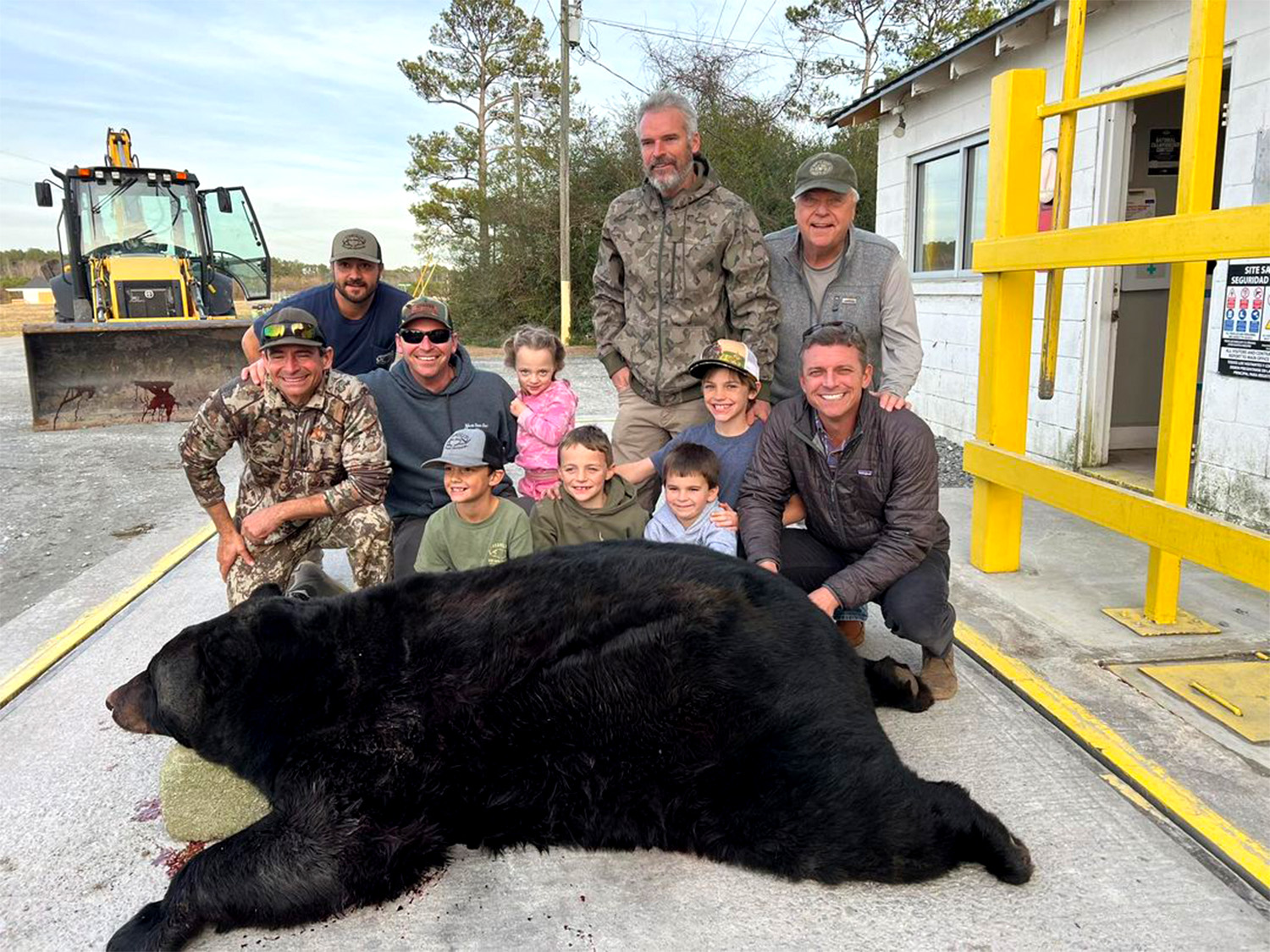Dudely had been baiting the area with peanuts. Since most of the trail cam photos of the bears had been taken at night, Jones set up his lock-on stand roughly 500 yards away from the bait site. He was hoping one of the bears would pass by on its way to or from its bed in the nearby swamp.
“I walked to my stand in the dark and waited for daylight,” says Jones, who lives in Greenville. “Before daylight a bear came through in the dark and passed by. But at 7 a.m. another giant bear came down a trail leading back to the swamp. The wind was pretty good, and as he got closer, he stepped behind some thick stuff. That’s when I drew my bow. He stepped into an opening less than 20 yards away, broadside. I grunted like I do for deer. He stopped, and I released my arrow.”
Jones knew he’d made a good hit behind the bear’s shoulder. He saw the bear run into a thick swamp, and while he never heard it fall, he says he heard the bear’s death moan barely 30 seconds later.

“About the time I found the bear, the hunters with dogs showed up, and they all pitched in to help load up my bear,” Jones says. “It took about eight of us to get him in the truck.”
Finding a scale big enough to accurately weigh the bear was also a challenge. Jones says they tried three different places before locating a scale that could handle the massive boar. They finally found one at a meat processor, and it registered 780 pounds.
Read Next: Trolling for Bears in British Columbia
Jones has since notified North Carolina officials about his bear, and he’s been told it could be the heaviest bear ever taken in the state. Outdoor Life was unable to confirm this detail, but if the scale Jones used is accurate, his bear far outweighs the 695-pound black bear that reportedly broke a weight record for western North Carolina in October 2022. It would also outweigh the current Pope and Young world-record black bear, which was killed in New Jersey and weighed 700 pounds.
“Some people are saying it may be a world record bear, but that’s determined by measuring it’s skull, which will take a while,” Jones explains. “Right now, the bear is with a taxidermist, and after the skull is cleaned it will be dried for 60 days, and then measured by a Pope and Young official. We’ll know then just how big a bear it is.”
